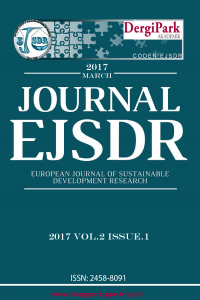Abstract
Sustainability has been linked with every aspect of present day civilization except size of human population. We talk about sustainable environment, sustainable economy, sustainable education, etc. and end up listing “… and also human population” at the end of the causes of environmental degradation, bad economy, inadequate education etc. Practically, the study of natural ecosystems alone is not getting us anywhere. We have to discuss these aspects for each political ecosystem as defined by the geographical boarders of states as recognized by the UN and consider the human population in each state and determine the sustainability of its size. Political states and their populations have been suffering from the consequences of overpopulation for a long time. Indications of their continuously degrading environment, poor economy and unemployment are undeniable. On the other hand the size and distribution of the population of each state is well documented. Our primitive population model is considering the population distribution diagrams as a basic block with the net births each year as input to this block and the number of people that retire each year as the output. The difference between these numbers for each state will be the number of people that are expected to be unemployed when they reach the age 21 or 22 for university graduates plus the age group (15-24) that has not gone to university. We make a case study for some states and compare their present day unemployment. We open the development of unemployment mathematical model to other interested researchers for further development and collaboration.
References
- (2016) OECD Data website.[Online]. Available: https://data.oecd.org/unemp/youth-unemployment-rate.htm#indicator-chart
- (2016) OECD Statistics website. [Online]. Available: http://stats.oecd.org/Index.aspx?DatasetCode=POP_FIVE_HIST#
- Federal Reserve Bank of San Francisco Economic Letter, February 14, 2011. [Online]. Available: http://www.frbsf.org/economicresearch/publications/economic-letter/2011/february/new-normal-%20unemployment-rate/
- (2016) Worldbank Data website. [Online]. Available: http://data.worldbank.org/indicator/EN.POP.DNST
- K. A. McKee and L. M. Kohm, “Examining the Associations between Sustainable Development Population Policies and Human Trafficking”, 23 Michigan State International Law Review 1, January 17, 2015.[Online]. Available at SSRN: http://ssrn.com/abstract=2551305
- Dr. A. A. Bartlett, “Reflections on Sustainability, Population Growth, and the Environment”, An NPG Forum Paper, February 2016.
Abstract
References
- (2016) OECD Data website.[Online]. Available: https://data.oecd.org/unemp/youth-unemployment-rate.htm#indicator-chart
- (2016) OECD Statistics website. [Online]. Available: http://stats.oecd.org/Index.aspx?DatasetCode=POP_FIVE_HIST#
- Federal Reserve Bank of San Francisco Economic Letter, February 14, 2011. [Online]. Available: http://www.frbsf.org/economicresearch/publications/economic-letter/2011/february/new-normal-%20unemployment-rate/
- (2016) Worldbank Data website. [Online]. Available: http://data.worldbank.org/indicator/EN.POP.DNST
- K. A. McKee and L. M. Kohm, “Examining the Associations between Sustainable Development Population Policies and Human Trafficking”, 23 Michigan State International Law Review 1, January 17, 2015.[Online]. Available at SSRN: http://ssrn.com/abstract=2551305
- Dr. A. A. Bartlett, “Reflections on Sustainability, Population Growth, and the Environment”, An NPG Forum Paper, February 2016.
Details
| Subjects | Engineering |
|---|---|
| Journal Section | Makaleler |
| Authors | |
| Publication Date | February 25, 2017 |
| Published in Issue | Year 2017 Volume: 2 Issue: 1 |

